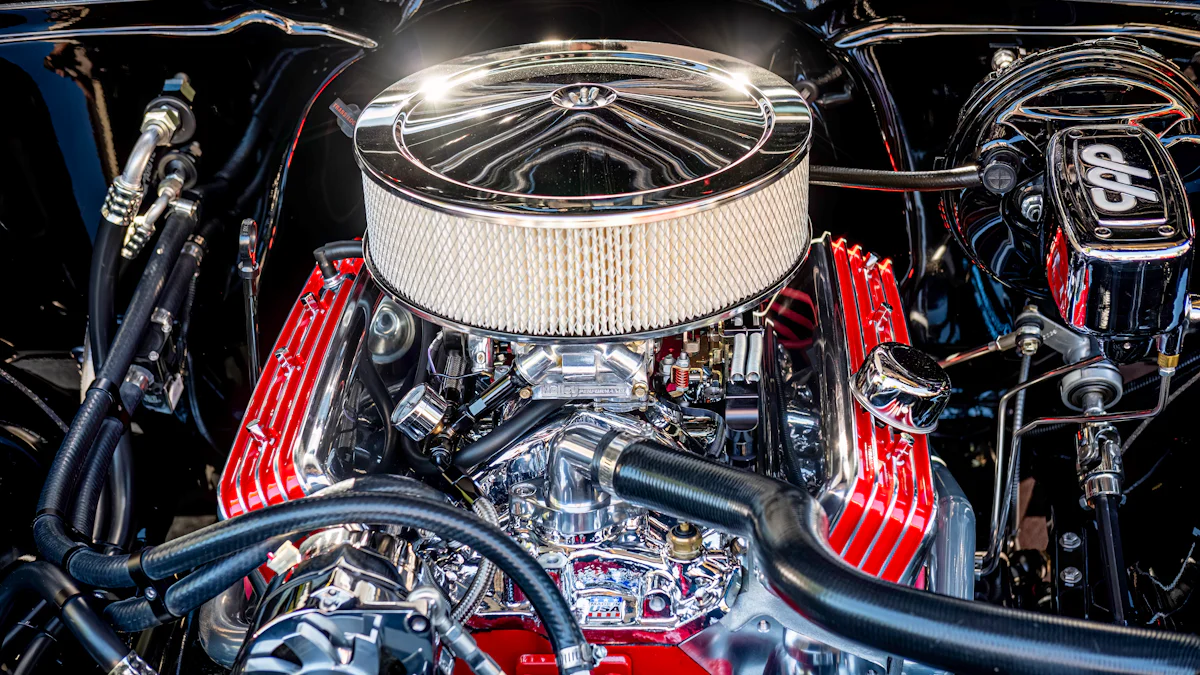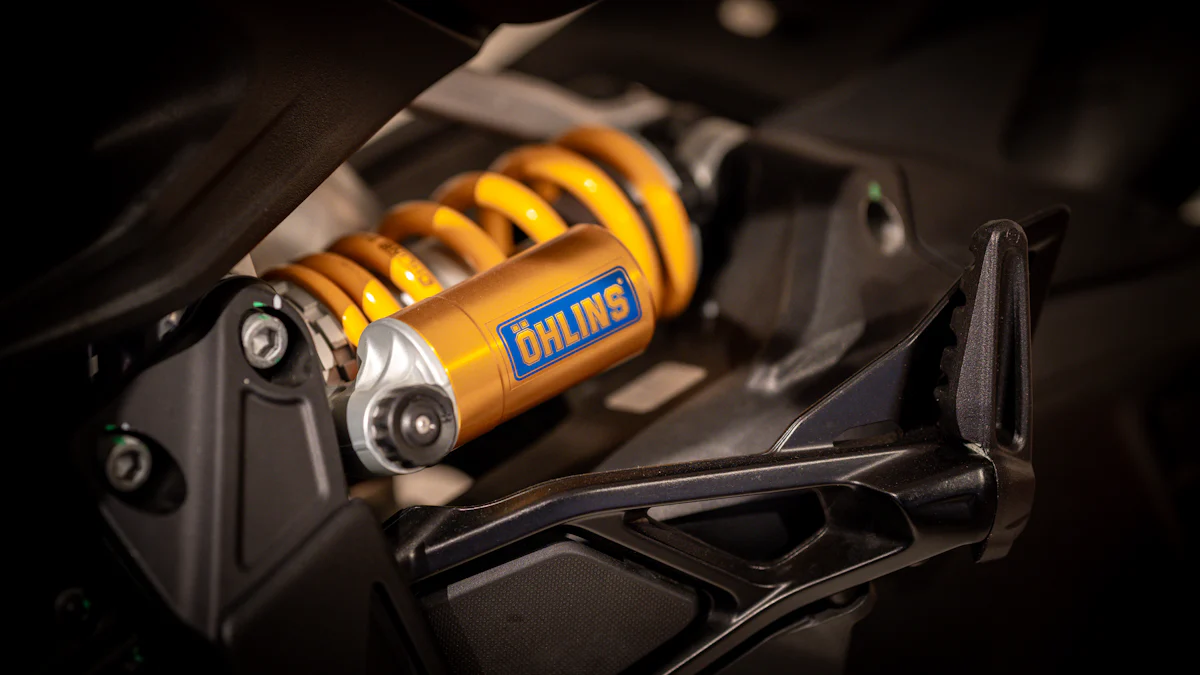
A high performance damper can transform a racing engine. This component plays a crucial role in absorbing vibrations and harmonics. A high performance damper enhances power output and ensures smoother operation. Racing engines demand precision and reliability, which this damper provides. The benefits include improved durability and reduced wear and tear. Upgrading to a high performance damper can boost overall engine efficiency and longevity.
Understanding High Performance Dampers

What is a High Performance Damper?
Definition and Purpose
A high performance damper, also known as a harmonic balancer, plays a critical role in racing engines. This component absorbs vibrations and harmonics generated by the engine. The primary purpose involves enhancing engine stability and performance. By mitigating these vibrations, the damper ensures smoother operation and prolongs engine life.
Importance in Racing Engines
Racing engines demand precision and reliability. A high performance damper stabilizes the engine, reducing wear and tear. This stability translates to improved power output and efficiency. The damper’s ability to absorb minute vibrations enhances driving stability and comfort. This feature proves essential in high-stress racing environments.
Construction and Materials
High-Quality Materials Used
Manufacturers use high-quality materials to construct high performance dampers. Steel, nodular iron, and other durable metals ensure longevity and reliability. These materials withstand extreme conditions, making them ideal for racing applications. The choice of material directly impacts the damper’s effectiveness and durability.
Design and Engineering
Design and engineering play pivotal roles in the effectiveness of a high performance damper. Precision engineering ensures that the damper fits perfectly within the engine assembly. Advanced design techniques optimize the damper’s ability to absorb vibrations. Manufacturers often incorporate timing marks and removable counterweights to enhance functionality.
Key Features
Timing Marks
Timing marks on a high performance damper facilitate accurate engine tuning. These marks allow mechanics to set the correct timing for optimal performance. Accurate timing ensures efficient power transfer and smooth engine operation. This feature proves invaluable for both professional mechanics and car enthusiasts.
Removable Counterweights
Removable counterweights offer customization options for specific engine needs. These counterweights enable fine-tuning of the damper’s performance. Customization ensures that the damper meets the unique requirements of different racing engines. This flexibility enhances the overall efficiency and reliability of the engine.
Benefits of Using a High Performance Damper
Improved Engine Performance
Enhanced Power Output
A high performance damper significantly boosts engine power output. This component reduces vibrations that can rob the engine of efficiency. By stabilizing the engine, the damper allows for more effective power transfer. This results in a noticeable increase in horsepower and torque.
Smoother Operation
Smoother engine operation stands as another key benefit. The damper absorbs minute vibrations and harmonics, leading to a more stable engine. This stability translates to less engine noise and fewer mechanical issues. Drivers experience a smoother, more comfortable ride.
Durability and Reliability
Long-Lasting Components
High performance dampers feature long-lasting components. Manufacturers use high-quality materials like steel and nodular iron. These materials withstand extreme conditions, ensuring the damper’s longevity. Racing engines benefit from this durability, reducing the need for frequent replacements.
Reduced Wear and Tear
Reduced wear and tear on engine components is another advantage. The damper minimizes vibrations that cause mechanical stress. This leads to less friction and heat generation within the engine. As a result, engine parts experience less wear, extending their lifespan.
Comparisons with Other Products
Standard Dampers vs. High Performance Dampers
Standard dampers cannot match the capabilities of high performance dampers. Performance dampers suppress minute vibrations and stabilize chassis distortion. These dampers provide benefits like reduced body sway and improved driving comfort. Standard dampers lack these advanced features, making them less effective in high-stress environments.
Real-World Applications and Testimonials
Real-world applications highlight the effectiveness of high performance dampers. Professional racers and car enthusiasts report significant improvements in engine performance. Testimonials often mention enhanced power output and smoother operation. These real-world experiences validate the benefits of upgrading to a high performance damper.
Applications in Racing
Types of Racing Engines
Drag Racing
Drag racing engines require components that can handle extreme stress and high RPMs. High performance dampers play a crucial role in these engines. These dampers absorb vibrations and harmonics, ensuring stability during rapid acceleration. This stability translates to improved power output and reduced wear on engine components. Many drag racers report significant gains in performance after upgrading to high performance dampers.
Circuit Racing
Circuit racing engines demand precision and reliability over extended periods. High performance dampers provide the necessary stability for these engines. By absorbing minute vibrations, these dampers enhance driving comfort and control. Circuit racers benefit from smoother engine operation and reduced mechanical issues. The use of high performance dampers in circuit racing has become a standard practice among professional teams.
Installation and Maintenance
Step-by-Step Installation Guide
- Preparation: Gather all necessary tools and the high performance damper. Ensure the engine is cool before starting the installation.
- Remove Old Damper: Disconnect the battery and remove any belts or accessories obstructing access to the old damper. Use a puller tool to remove the old damper from the crankshaft.
- Inspect Crankshaft: Clean and inspect the crankshaft snout for any damage or debris. Ensure a smooth surface for the new damper.
- Install New Damper: Align the keyway on the new damper with the crankshaft key. Gently slide the damper onto the crankshaft. Use a damper installation tool to press the damper fully into place.
- Secure Damper: Tighten the damper bolt to the manufacturer’s specified torque. Reattach any belts or accessories removed earlier.
- Final Check: Reconnect the battery and start the engine. Check for proper alignment and operation of the new damper.
Maintenance Tips for Longevity
- Regular Inspections: Periodically inspect the damper for signs of wear or damage. Look for cracks, corrosion, or any unusual vibrations.
- Proper Cleaning: Keep the damper and surrounding areas clean. Remove any dirt or debris that may affect its performance.
- Torque Checks: Regularly check the damper bolt torque to ensure it remains within the manufacturer’s specifications. Loose bolts can lead to damper failure.
- Monitor Engine Performance: Pay attention to changes in engine performance. Unusual noises or vibrations may indicate damper issues.
- Professional Servicing: Have a professional mechanic inspect and service the damper during routine maintenance. Professional expertise ensures the damper remains in optimal condition.
High performance dampers significantly enhance the performance and reliability of racing engines. Proper installation and maintenance ensure these benefits are fully realized, providing a competitive edge in various racing disciplines.
High performance dampers offer several key benefits. These components enhance engine power output, ensuring smoother operation and reduced wear and tear. Upgrading to a high performance damper significantly boosts engine efficiency and longevity.
Professional racers and car enthusiasts report noticeable improvements in engine stability and driving comfort. One rider noted, “High speed riding becomes wonderfully stable and small unevenness in the road becomes less noticeable.”
Consider upgrading your engine with a high performance damper for optimal performance and reliability. This upgrade provides a competitive edge in various racing disciplines.
Post time: Jul-29-2024



